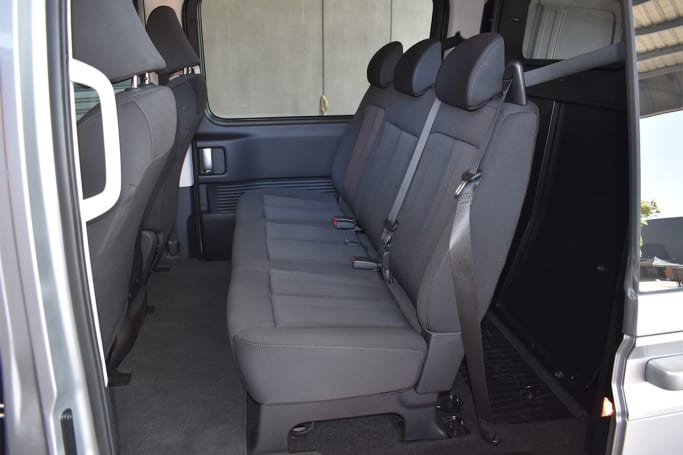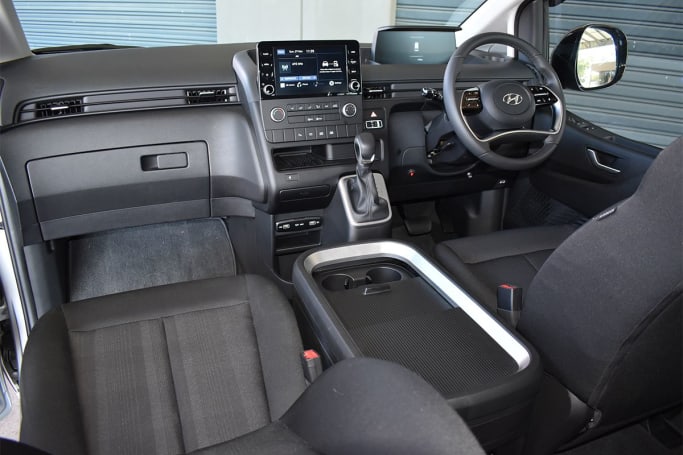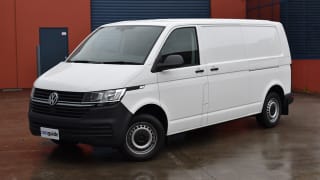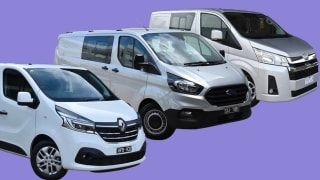The Staria-Load is available as a single-cab van or five-seater crew van like our example. Both are available only with the new 2.2-litre turbo-diesel and eight-speed torque converter automatic transmission, with the Crew Van having a list price of $49,640.
That pricing looks razor-sharp compared with crew van rivals like the Toyota HiAce Crew ($49,650), Ford Transit 340L DCiV ($54,490), Renault Trafic Crew Lifestyle ($55,090) and Mercedes-Benz Vito 116 Crew ($65,248). Our test vehicle’s premium silver metallic paint, tow-bar kit, rear bumper protector bars, front nudge bar, LED light bar and bonnet protector/front door window shades are all extra-cost options or accessories.

The Staria-Load blends futuristic yet functional styling with the upmarket look of body-coloured grille, bumpers, door mirrors and handles. Those attributes contrast somewhat with its work-focused 17-inch steel wheels and 215/65 R17 tyres with matching spare.
The modern and spacious interior can accommodate up to five occupants on fabric-trimmed seating. Useful features include keyless entry, leather-appointed steering wheel with audio and cruise controls, leather-appointed shift knob, tilt-and-reach adjustable steering column, electronic parking brake, heated door mirrors, Qi wireless smartphone charger, four USB ports and tyre pressure monitoring to name a few.
There’s also a two-speaker infotainment system with 8.0-inch touchscreen display and multiple connectivity including wireless Apple CarPlay/Android Auto. Plus, there’s heaps of places to store stuff and a long overdue upgrade to what are now benchmark safety standards.





















